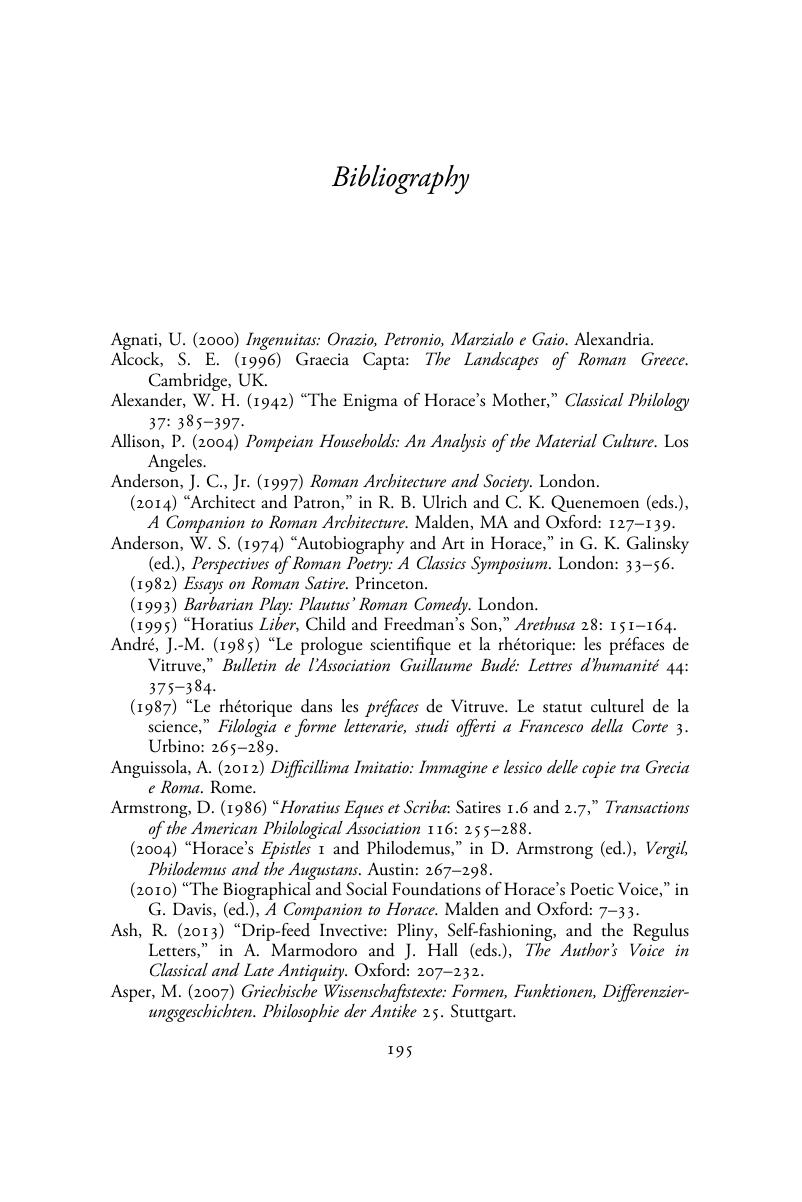Book contents
- Author and Audience in Vitruvius’ De architectura
- Greek Culture in the Roman World
- Frontispiece
- Author and Audience in Vitruvius’ De architectura
- Copyright page
- Dedication
- Contents
- Figures
- Plates
- Preface
- Abbreviations
- Introduction
- 1 Greek Knowledge and the Roman World
- 2 The Self-Fashioning of Scribes
- 3 House and Man
- 4 Art Display and Strategies of Persuasion
- 5 The Vermilion Walls of Faberius Scriba
- Epilogue
- Bibliography
- Index Locorum
- General Index
- References
Bibliography
Published online by Cambridge University Press: 16 November 2017
- Author and Audience in Vitruvius’ De architectura
- Greek Culture in the Roman World
- Frontispiece
- Author and Audience in Vitruvius’ De architectura
- Copyright page
- Dedication
- Contents
- Figures
- Plates
- Preface
- Abbreviations
- Introduction
- 1 Greek Knowledge and the Roman World
- 2 The Self-Fashioning of Scribes
- 3 House and Man
- 4 Art Display and Strategies of Persuasion
- 5 The Vermilion Walls of Faberius Scriba
- Epilogue
- Bibliography
- Index Locorum
- General Index
- References
Summary

- Type
- Chapter
- Information
- Author and Audience in Vitruvius' De architectura , pp. 195 - 223Publisher: Cambridge University PressPrint publication year: 2017

